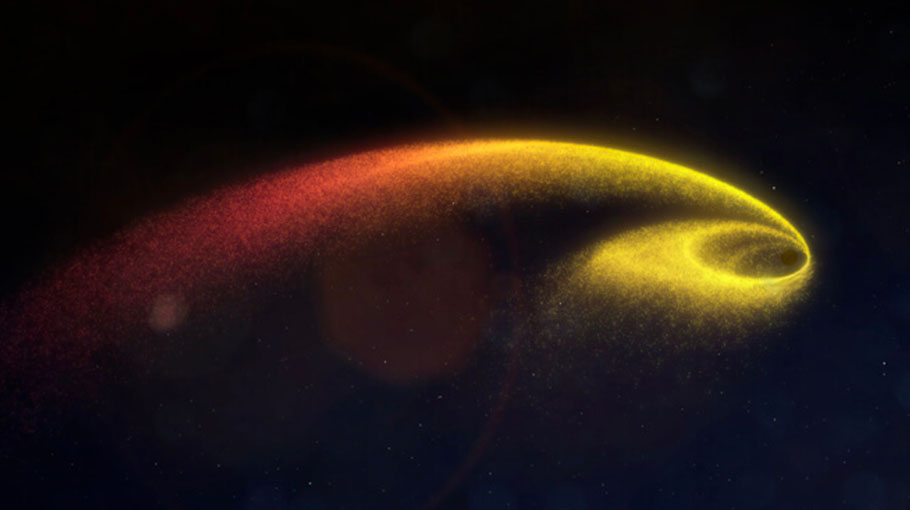Astronomers create a Black Hole’s “meal schedule”


A new study by NASA astronomers, utilising information from the Chandra X-ray Observatory, Swift, and XMM-Newton telescopes, has revealed the first-ever "meal schedule" for a supermassive black hole.
The focus of this cosmic dining analysis is the black hole AT2018fyk, a colossal entity weighing 50 million times the mass of our Sun and located about 860 million light-years from Earth.
First detected in 2018 due to a dramatic increase in brightness, AT2018fyk was observed through various instruments, including the NICER on the ISS. The initial flare was attributed to a tidal disruption event, where a star strayed too close to the black hole and was torn apart. The resulting debris heated up, emitting X-rays and ultraviolet radiation, before eventually fading as the star was fully consumed.
However, the black hole's appetite didn't end there. Roughly two years later, AT2018fyk brightened again, indicating that the star had likely survived the first tidal encounter. It had entered a highly elliptical orbit, causing periodic feeding events as it approached the black hole. Each close pass results in the star losing matter, which is drawn into the black hole and emits significant X-ray radiation.
Astronomers predicted that AT2018fyk’s second feeding cycle would conclude in August 2023, and Chandra’s observations on August 14 confirmed a sharp decline in X-ray emission, marking the end of this “meal.”
Looking ahead, researchers estimate that if remnants of the star remain, the black hole’s third feeding phase will commence between May and August 2025. This upcoming event is expected to be less substantial as the star continues to diminish.
This new insight into black hole feeding patterns not only highlights the dynamic interactions between supermassive black holes and their stellar prey but also provides a unique glimpse into the rhythmic cosmic events unfolding in distant galaxies.




